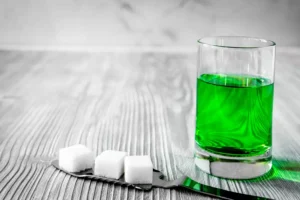No products in the cart.
Alcohol Abuse and Dependence Alcohol Use Disorder Leave a comment

But many people in recovery show improvements in memory and concentration, even within the first month of sobriety. Friends and family members of people who have an alcohol addiction alcoholism can benefit from professional support or by joining programs like Al-Anon. In order for treatment to work, the person with an alcohol addiction must want to get sober.
More in The Road to Recovery with Alcohol Dependence

It also includes binge drinking — a pattern of drinking where a male has five or more drinks within two hours or a female has at least four drinks within two hours. Treatment for AUD can differ from person to person but sometimes starts with detoxification (detox). For anywhere from 2 days to a week, a doctor keeps a close eye on you while alcohol fully leaves your https://ecosoberhouse.com/ system. Because you could have withdrawal symptoms, medication that makes you sleep a lot is often part of detox. This guide is written for individuals—and their family and friends—who are looking for options to address alcohol problems. It is intended as a resource to understand what treatment choices are available and what to consider when selecting among them.
Types of Behavioral Treatments
- If you or a loved one is struggling with AUD, make an appointment with a primary care provider such as a medical doctor or nurse practitioner.
- Because you could have withdrawal symptoms, medication that makes you sleep a lot is often part of detox.
- If you think you need help with alcohol use, talk to your doctor.
- Alcoholism is a complex, many-sided phenomenon, and its many formal definitions vary according to the point of view of the definer.
- The later stages of addiction can yield physical changes, but behavioral signs can help detect it early on.
It’s important that each person get involved in a recovery program that will support long-term sobriety. This could mean an emphasis on therapy for someone who is depressed, or inpatient treatment for someone with severe withdrawal symptoms. Studies show most people with this condition recover, meaning they reduce how much they drink, or stop drinking altogether. They may start drinking to cope with stressful events like losing a job, going through a divorce, or dealing with a death in their family or a close friend. Talk to your healthcare provider if you’re under stress and think you may be at risk for relapse.
- Like all addictions, alcohol use disorder is linked to a complex combination of biological, social, and psychological factors.
- There are effective ways to treat this disease and steps you can take to help a loved one enter recovery.
- Don’t forget to take care of yourself, too; consider seeking out your systems of support or even medical help if you’re having trouble.
Starting with a Primary Care Provider

But some research now shows that cutting back on heavy drinking, or what’s known as harm reduction treatment, can be useful. You can choose from different types of therapy such as alcohol counseling, cognitive behavioral therapy, mindfulness-based therapy, or couples or family therapy. Being around others 24-7 who share your goal to quit drinking may make recovery easier for you.
- If you drink alcohol while it’s in your system, you’ll feel physically sick.
- Most residential treatment programs include individual and group therapy, support groups, educational lectures, family involvement, and activity therapy.
- For instance, you might miss important family events or meetings with co-workers because you’ve been drinking.
- As with other medical diseases but unlike most bad habits, prospective studies demonstrate that willpower per se is of little predictive significance.
- Drinking heavily over long periods of time may lead to changes in how the brain functions, from memory slips to more debilitating conditions.
When healthcare providers screen for AUD, they look at drinking behavior patterns within the last year to determine a diagnosis. They use 11 criteria established by the DSM-5 to assess alcohol use severity. Alcohol use disorder is a problematic pattern of alcohol use that leads to distress in one’s daily life, according to the DSM-5. Experiencing at least two symptoms throughout the course of a year merits a diagnosis, from mild to moderate to severe. Alcohol Use Disorder is a pattern of disordered drinking that leads to significant distress.
What are the risk factors?
Alcohol misuse also plays a role in domestic violence and child abuse. About 62% of Americans drink alcohol, whether beer, wine, liquor, or mixed drinks. About 1 in 5 people admit that they sometimes drink more than they “should.” The United States Preventive Services Task Force recommends screening adults for unhealthy alcohol use in the primary care setting.
The immediate physical effects of drinking alcohol range from mild mood changes to loss of coordination, balance, and speech. Any of these signs can signal that you’re drunk or what’s officially called “acute alcohol intoxication.” They usually wear off in a few hours after you stop drinking. Your risk of having AUD is three to four times greater if a parent has it, although many people who have a parent with a drinking issue don’t develop one as well.


